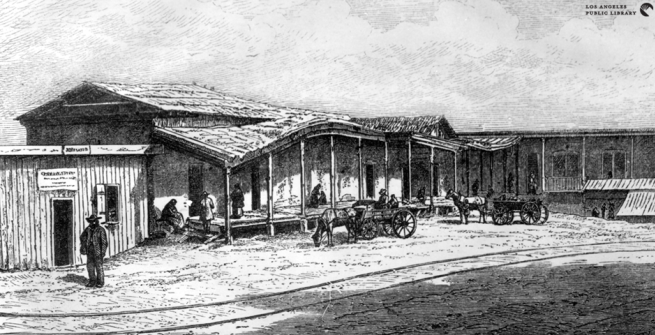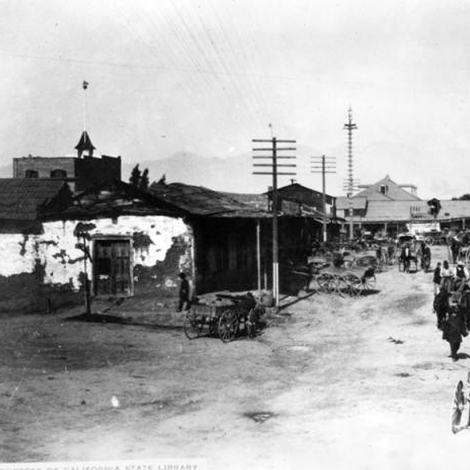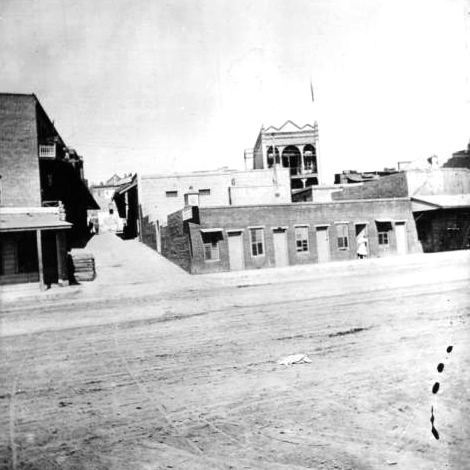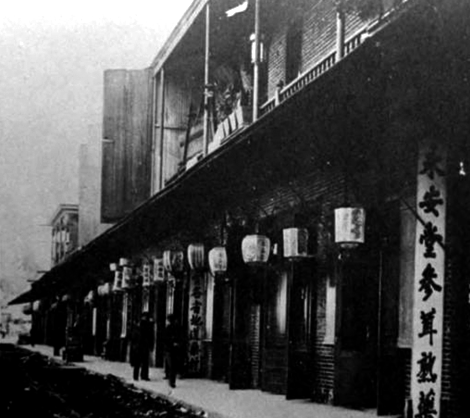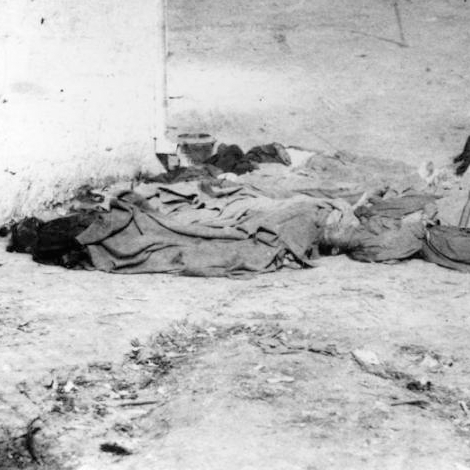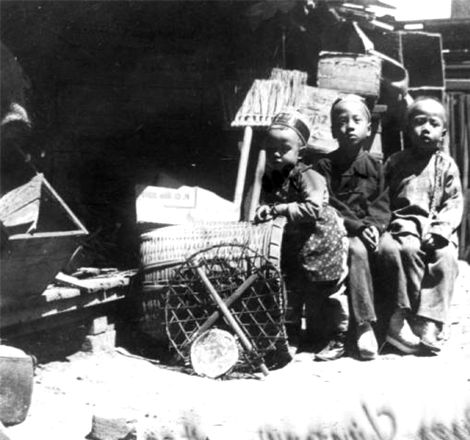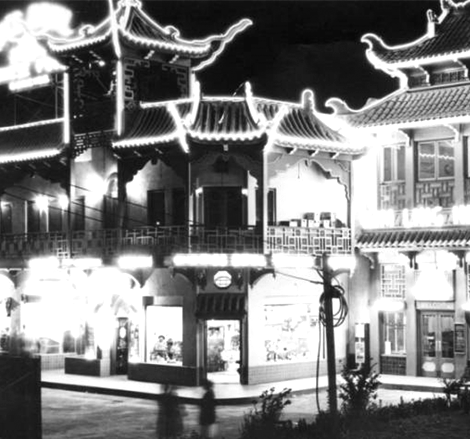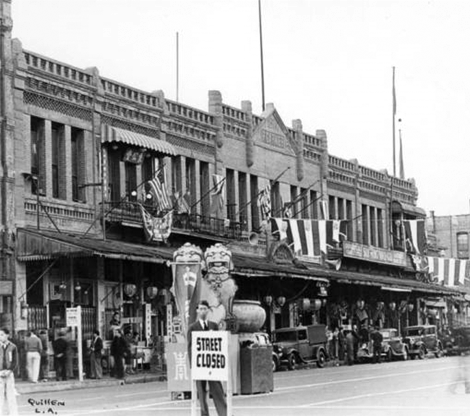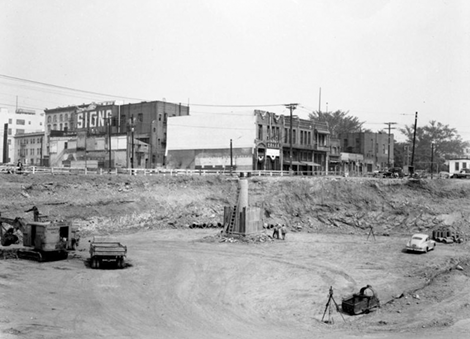The Big Read this year is The Beautiful Things That Heaven Bears by Dinaw Mengestu. A few of the themes running through this award-winning novel about an Ethiopian immigrant are displacement, cultural identity, community, and the American Dream. These themes are particularly relevant to Los Angeles, where different cultures have created and redefined our city’s history since its beginning as a pueblo founded by 44 mixed-race Pobladores.
By taking a look back at the history of Chinatown, we can learn much about the history of not only the Chinese people in Los Angeles but also of the city itself.
Chinese have been part of the city of Los Angeles for over 160 years. The United States Federal Census of 1850, the first to include California, lists two Chinese men living in Los Angeles: Alluce and Ah Fou, both house servants in the home of Robert and Mary Haley.

The community grew as many of the Chinese workers recruited to work on the railroads migrated to Los Angeles when the Transcontinental Railroad was completed. More than half of the Chinese lived in the adobes along Calle de los Negros, or Negro Alley (named for the dark-skinned Spaniards who originally lived there). Calle de los Negros was the infamous vice district of Los Angeles. Saloons, gambling parlors, and brothels lined the short, unpaved alley just east of the Los Angeles Plaza.
This small community was an ethnic enclave where Chinese immigrants spoke the same language, shared a culture, and provided support for each other. Chinese took jobs and started businesses in the industries that were open to them. These tended to be service businesses such as laundries, shoe repair, restaurants, and the produce trade.
The Chinese faced many hardships: exclusionary laws, restrictive housing covenants, discrimination, and racial violence. Nineteen Chinese were lynched by a mob of 500 in the Chinese Massacre of 1871.
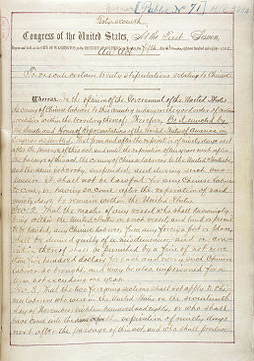
Despite these many obstacles, from 1850 to 1900, the Chinese population grew to approximately 3,000 residents and Chinatown became a full-fledged community spread over 15 streets with general stores, Chinese organizations, schools, temples, and an opera theater.
By 1910, the heyday of Chinatown was coming to a close. City Market, a new produce market at 9th and San Pedro streets, provided jobs and opportunities outside of Old Chinatown. Residents moved to single family homes in the East Adams area to be closer to the new market.
Around this same time, rumors began to circulate about a railroad station going up next to the intersecting rail lines located in Chinatown. The neighborhood fell into disrepair as landlords and property owners did not improve or maintain buildings that might soon be torn down. Those that could afford to move out did so. After two decades of slow decline, the demolition of Chinatown for the construction of Union Station began in 1933.
The future of Chinatown was in doubt until a group of Chinese Americans led by Peter Soo Hoo formed the Los Angeles Chinatown Corporation and purchased land a few blocks to the north of the former Chinatown location. They created a New Chinatown that was a blend of Chinese and American. Over 30,000 were present on June 25, 1938, for the grand opening of New Chinatown, the first Chinese district in the U.S. conceived, planned and owned by Chinese Americans. The celebration lasted late into the evening.
Most of the old Chinatown area that wasn’t torn down for Union Station was bulldozed for the construction of the 101 freeway in the late 1940s. The only building spared was part of the Garnier Block. The Garnier Building was built in 1890 and housed many Chinese social and business organizations. Still standing near the Plaza de Los Angeles, the Garnier Building is home to the Chinese American Museum and the last remaining piece of the original Chinatown.
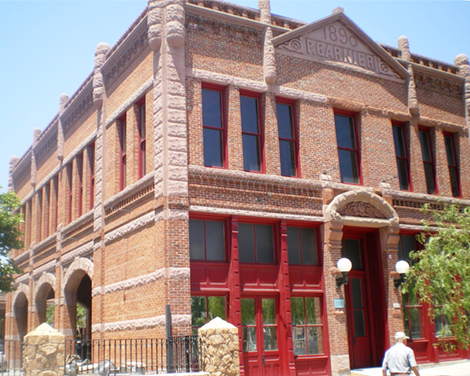
Chinatown is an example of the inexorable ebb and flow that remakes Los Angeles’ neighborhoods. It is an unfortunate truth that communities without strong political representation are often the first to fall victim to the call for urban redevelopment.
“The story of Chinatown in Los Angeles is the story of a community…Over the course of a century and a half, Chinatown has evolved into a symbol for the diversity and enterprising spirit of Los Angeles.”—Jenny Cho, “Chinatown in Los Angeles”
Further Reading
Related Event
Join us for a free film screening of the film Chinatown (1974) as part of our Big Read 2019 celebration. The film screening will take place after a brief presentation touching on stories of immigration and gentrification.
